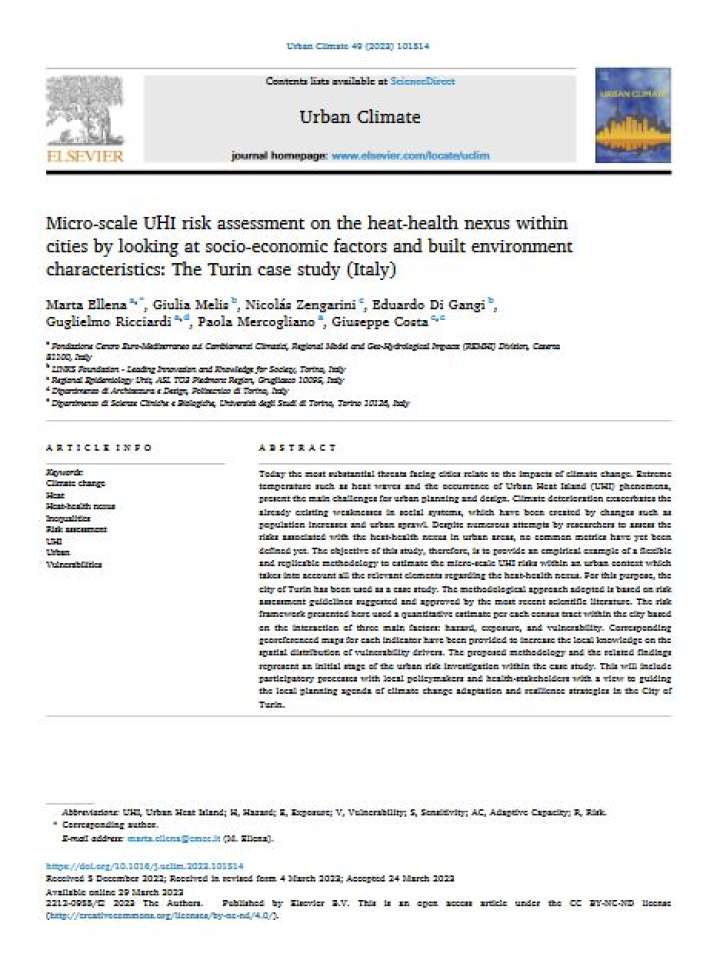Micro-scale UHI risk assessment on the heat-health nexus within cities by looking at socio-economic factors and built environment characteristics: The Turin case study (Italy)
The objective of this study is to provide an empirical example of a flexible and replicable methodology to estimate the micro-scale Urban Heat Island (UHI) risks within an urban context which takes into account all the relevant elements regarding the heat-health nexus. For this purpose, the city of Turin has been used as a case study. The methodological approach adopted is based on risk assessment guidelines suggested and approved by the most recent scientific literature. Today the most substantial threats facing cities relate to the impacts of climate change. Extreme temperature such as heat waves and the occurrence of Urban Heat Island (UHI) phenomena, present the main challenges for urban planning and design. Climate deterioration exacerbates the already existing weaknesses in social systems, which have been created by changes such as population increases and urban sprawl.
Despite numerous attempts by researchers to assess the risks associated with the heat-health nexus in urban areas, no common metrics have yet been defined yet. The risk framework presented here used a quantitative estimate per each census tract within the city based on the interaction of three main factors: hazard, exposure, and vulnerability. Corresponding georeferenced maps for each indicator have been provided to increase the local knowledge on the spatial distribution of vulnerability drivers. The proposed methodology and the related findings represent an initial stage of the urban risk investigation within the case study. This will include participatory processes with local policymakers and health-stakeholders with a view to guiding the local planning agenda of climate change adaptation and resilience strategies in the City of Turin.
Explore further
